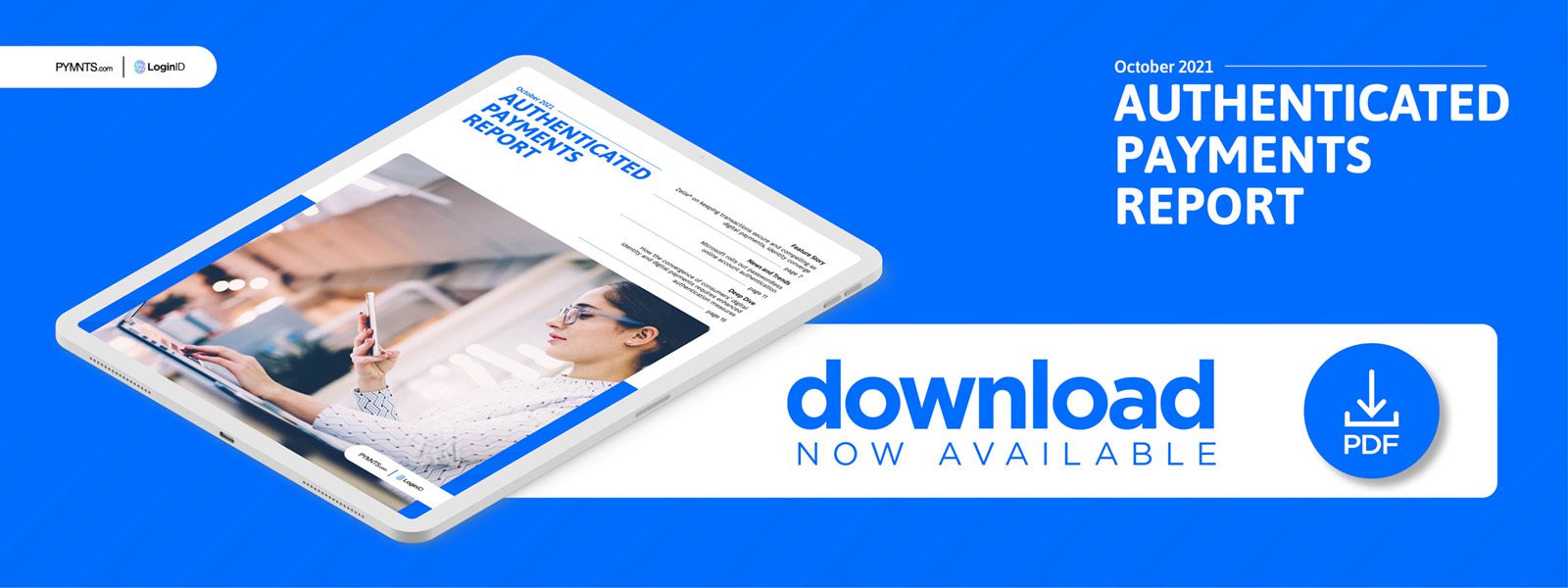Zelle® on Keeping Transactions Secure and Compelling as Digital Payments, Identity Converge

Tying consumers’ digital identities to their payment behaviors is becoming key to ensuring security and offering customer experiences based on unique data insights, according to Zelle’s Sean Loosli. In the Authenticated Payments Report, he explains how the convergence of digital ID and payments can be leveraged to power natural customer experiences that build trust and loyalty.
Cashless digital payments are steadily making inroads in the physical and online commerce spaces, enabling rapid and contactless transactions for virtually all goods and services. The new normal of digital payments is also driving the creation of technologies that can integrate consumers’ digital identities and payment methods, presenting new opportunities for merchants to fine-tune the customer experience based on personal data.
Consumers’ expectations for seamless and safe payment experiences are also rising, and digital payment platforms are being pressed to balance these priorities. Meeting consumers’ digital payment demands means platforms cannot compromise on offering standout security and frictionless consumer experiences, said Sean Loosli, head of consumer and small business payments at Zelle®, which is owned by Early Warning Services.
Zelle offers peer-to-peer (P2P) payments for all registered platform users, enabling them to make and request instant payments from others regardless of the financial institutions with which they bank.
“We are constantly evaluating and improving the Zelle experience to strike that balance,” Loosli said. “Because Zelle is offered through the mobile apps of hundreds of regulated U.S. financial institutions, consumers experience the same levels of security that they have when using their banks’ mobile apps and online properties. The Zelle platform is subject to the same multifactor authentication and other security layers that financial institutions impose on their digital channels.”
Loosli recently spoke to PYMNTS about the challenges that payment platforms face in providing a frictionless and trusted transaction environment, and how educating and interacting with customers to mitigate security risks can help keep both personal data and transaction information safe and secure.
Educating Consumers on Online Scams
Loosli explained that educating consumers about the security risks involved in digital transactions is as important as offering exceptional customer experience. To that end, he said Zelle has invested heavily in resources that can help teach users how to avoid being scammed.
The platform works with the nonprofit Cybercrime Support Network to spread awareness and educate consumers and small businesses on financial fraud and scams. It also uses in-app notifications to encourage consumers to pause and confirm the recipient before sending a payment.
“We remind consumers that, when you send money with Zelle, the money moves in minutes from one bank account to another,” he said. “We recommend only sending money to those you know and trust, treating payments like cash and being aware of ‘too-good-to-be true’ offers. We also work with our partner financial institutions to improve the ways they can catch suspicious payments and bad actors on behalf of our consumers. Preventing fraud and scams is a team effort between financial institutions, Zelle and consumers.”
Using Data Analytics and Security as a Market Differentiator
Leading payments players are also finding ways to ease authentication and provide high-quality customer experiences by converging user identity with payments experiences. Loosli said that this approach allows them to obtain unique competitive advantages with insights into usage patterns, proprietary customer data and integrations with third parties, via open application programming interfaces (APIs) or direct partnerships.
“While many of these approaches vary, the most successful implementations all bolster both ease of use and security by tying consumers’ digital identities to their payment behaviors,” he said. “They create experiences that make for a natural flow for the consumer and meet consumers at the point of need, rather than requiring the consumer to come to them as a side-task.
“The leading players also bolster confidence for the consumer by acting as a trusted third party or counterparty in these transactions, rather than asking the consumer to yield additional sensitive personal or financial information to unknown entities.”
Digital payments players can harness the power of digital identification to streamline payments, but this creates new security and privacy challenges as they work to balance the power of the data against the liabilities of storing and protecting it. For example, Loosli said that Zelle has robust security and privacy policies in place to control which data it collects, protect the information in its systems and minimize the transmission of sensitive details.
“Additionally, as multiple payments and digital identity management offerings come together, the complexity of the systems and numbers of interactions increases exponentially, thereby increasing the potential number of breakpoints,” he said. “Transparency in these partnerships, collaboration in thorough end-to-end testing and continuous vigilance against new threats are all critical to building and maintaining these systems.”
Zelle’s first line of defense against fraudsters is its banking partners’ security systems, meaning that any potential bad actor must first clear the onboarding requirements of the bank associated with a given Zelle account. Banks have extensive know your customer standards and procedures to identify and verify customers’ identities, Loosli said.
“We take additional measures behind the scenes to validate [that] you are who you say you are,” he added. “For example, we can assess the risk profile of an email address. As a consumer continues to transact on the Zelle network, their digital identity becomes more and more robust.
“We can then use this data about both senders and receivers to better protect the integrity of the network and allow seamless interactions for most consumers while putting safeguards in place against nefarious actors.”
Digital payments and digital identity are converging as payment platforms onboard users and obtain the data they need to deliver seamless and secure customer experiences. The verification and authentication approaches that these platforms take, however, must provide the security and seamlessness consumers expect.
